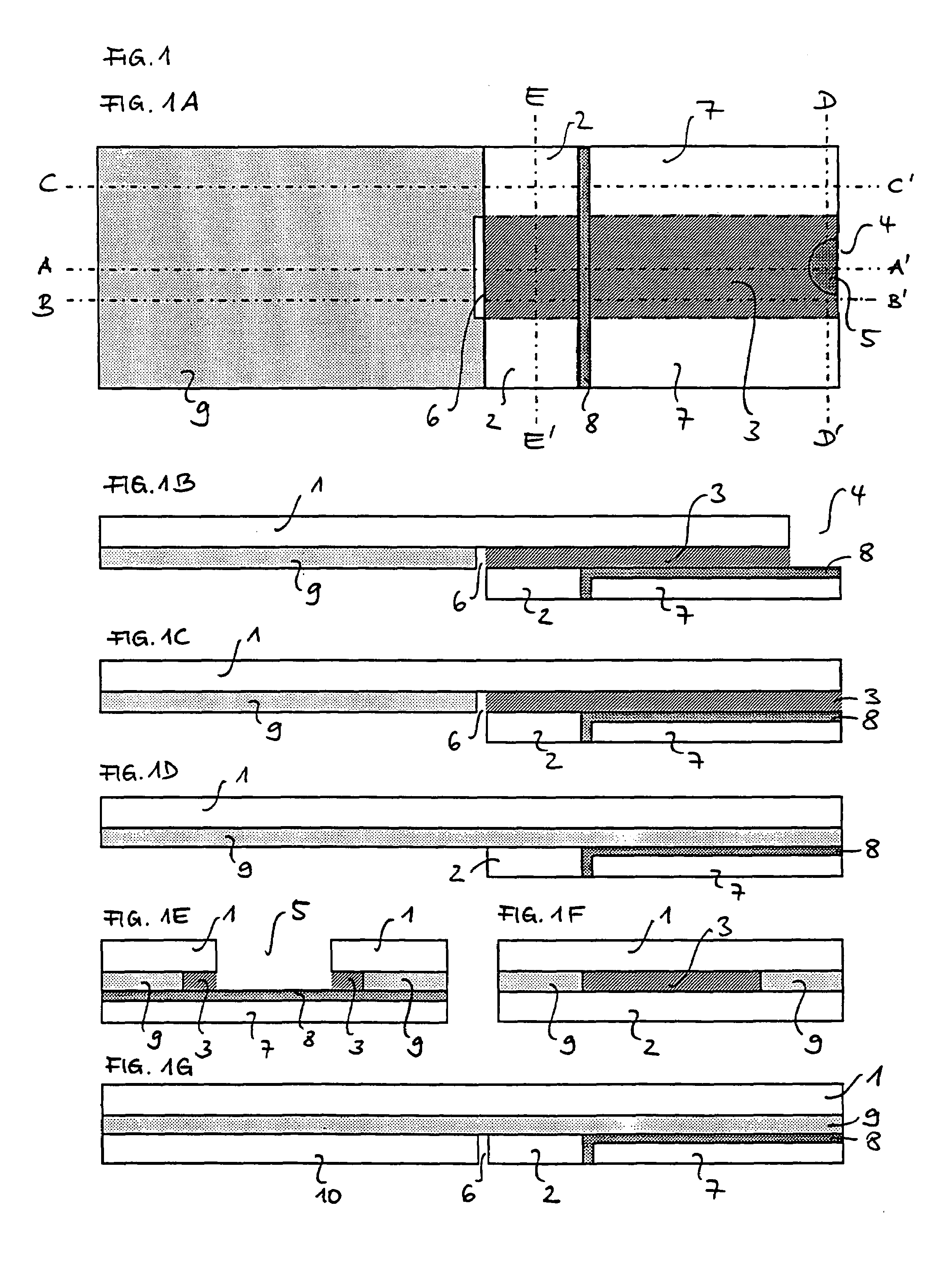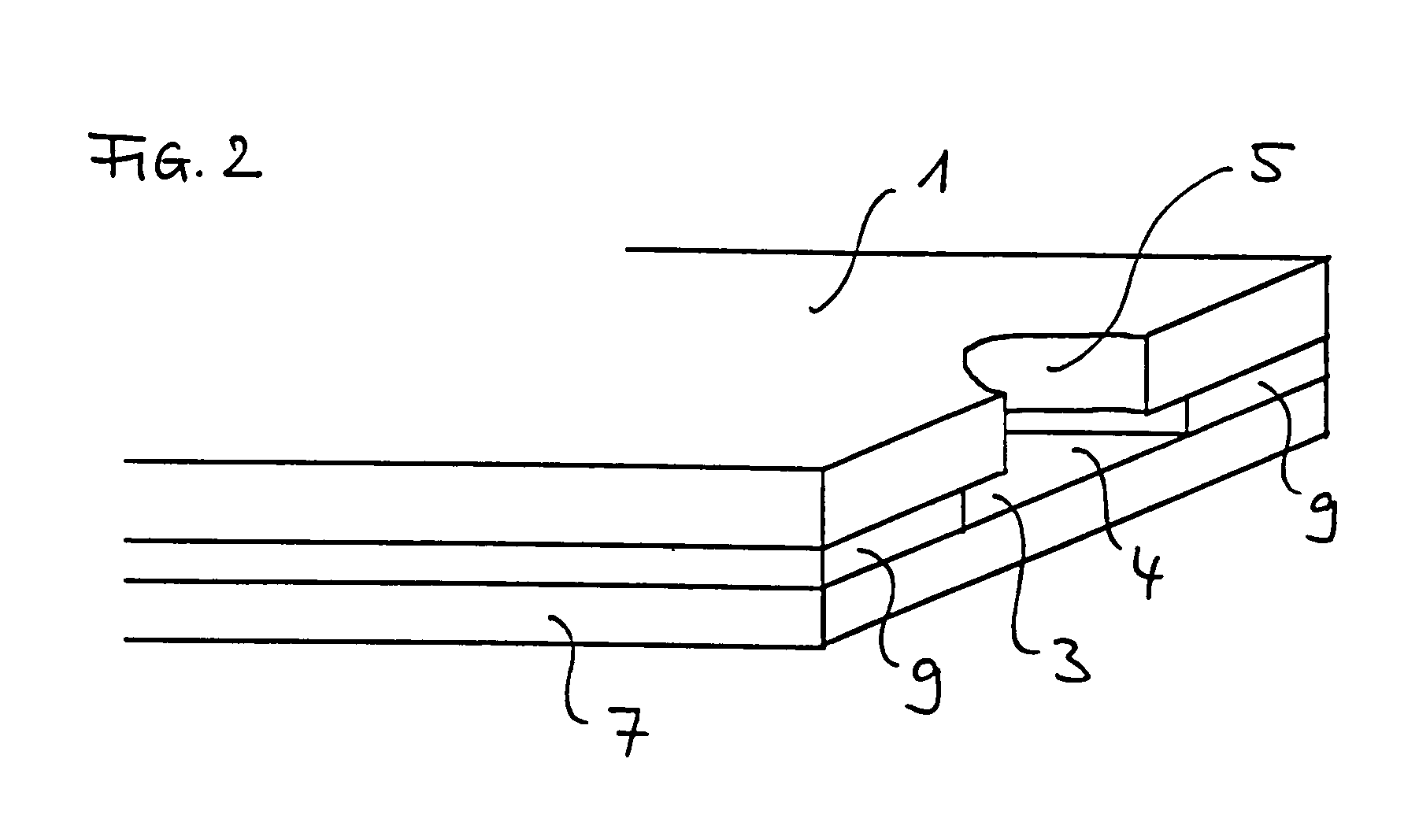Capillary active test element having an intermediate layer situated between the support and the covering
a technology of active test elements and support, which is applied in the direction of material testing goods, chemical methods analysis, withdrawing sample devices, etc., can solve the problems of liquid drop, difficulty in volumetric dosing, and difficulty in construction
- Summary
- Abstract
- Description
- Claims
- Application Information
AI Technical Summary
Benefits of technology
Problems solved by technology
Method used
Image
Examples
example 2
Measurement of the Blood Glucose Concentration with the Aid of the Test Element from Example 1
[0038]The sample application side of the test element from example 1 is placed on a drop of sample liquid. The capillary of the test element automatically fills with sample within 2 s. If glucose is present in the sample a colour development is visible in the detection film after a few seconds. The end point of the reaction is reached after ca. 30 to 35 s. The colour obtained can be correlated with the glucose concentration of the sample and either evaluated visually or by reflection photometry.
PUM
| Property | Measurement | Unit |
|---|---|---|
| notch width | aaaaa | aaaaa |
| surface tension | aaaaa | aaaaa |
| surface tension | aaaaa | aaaaa |
Abstract
Description
Claims
Application Information
 Login to View More
Login to View More - R&D
- Intellectual Property
- Life Sciences
- Materials
- Tech Scout
- Unparalleled Data Quality
- Higher Quality Content
- 60% Fewer Hallucinations
Browse by: Latest US Patents, China's latest patents, Technical Efficacy Thesaurus, Application Domain, Technology Topic, Popular Technical Reports.
© 2025 PatSnap. All rights reserved.Legal|Privacy policy|Modern Slavery Act Transparency Statement|Sitemap|About US| Contact US: help@patsnap.com



